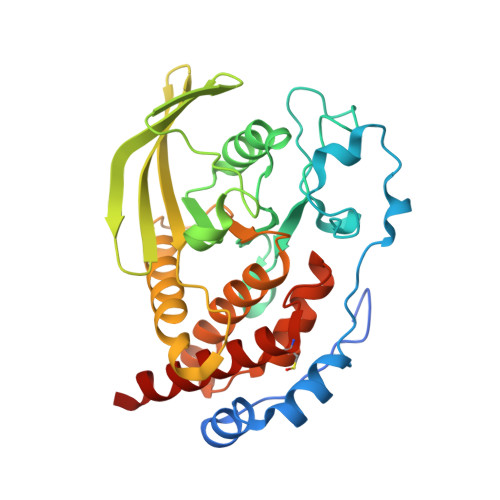X-ray Characterization and Structure-Based Optimization of Striatal-Enriched Protein Tyrosine Phosphatase Inhibitors.
Witten, M.R., Wissler, L., Snow, M., Geschwindner, S., Read, J.A., Brandon, N.J., Nairn, A.C., Lombroso, P.J., Kack, H., Ellman, J.A.(2017) J Med Chem 60: 9299-9319
- PubMed: 29116812
- DOI: https://doi.org/10.1021/acs.jmedchem.7b01292
- Primary Citation of Related Structures:
5OVR, 5OVX, 5OW1 - PubMed Abstract:
Excessive activity of striatal-enriched protein tyrosine phosphatase (STEP) in the brain has been detected in numerous neuropsychiatric disorders including Alzheimer's disease. Notably, knockdown of STEP in an Alzheimer mouse model effected an increase in the phosphorylation levels of downstream STEP substrates and a significant reversal in the observed cognitive and memory deficits. These data point to the promising potential of STEP as a target for drug discovery in Alzheimer's treatment. We previously reported a substrate-based approach to the development of low molecular weight STEP inhibitors with K i values as low as 7.8 μM. Herein, we disclose the first X-ray crystal structures of inhibitors bound to STEP and the surprising finding that they occupy noncoincident binding sites. Moreover, we utilize this structural information to optimize the inhibitor structure to achieve a K i of 110 nM, with 15-60-fold selectivity across a series of phosphatases.
Organizational Affiliation:
Department of Chemistry, Yale University , New Haven, Connecticut 06520, United States.
















